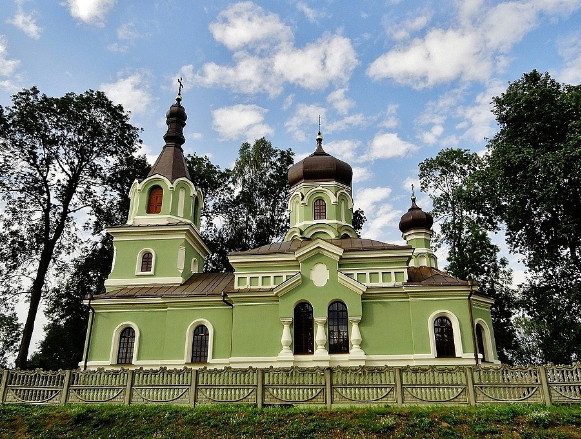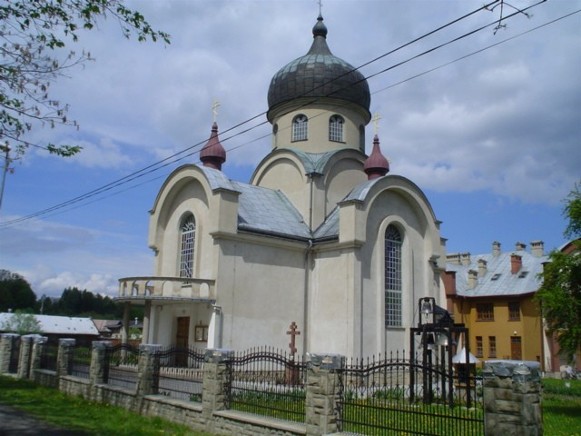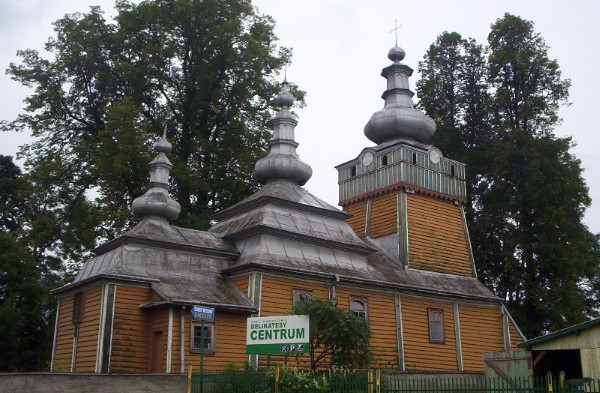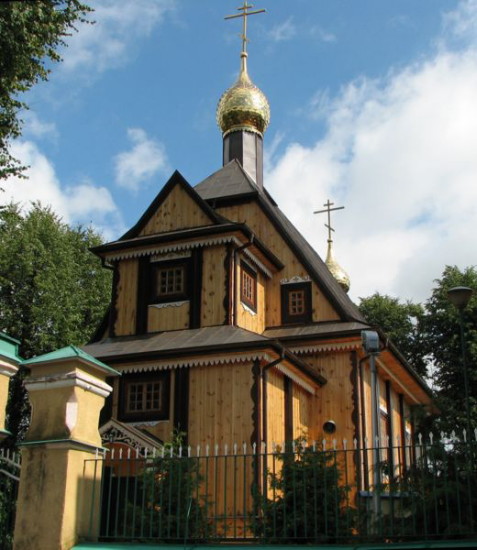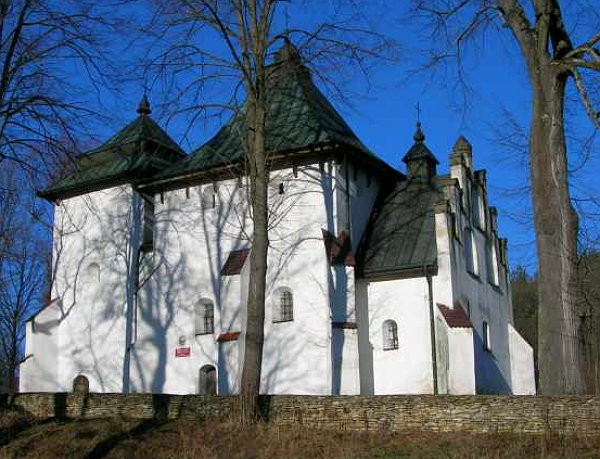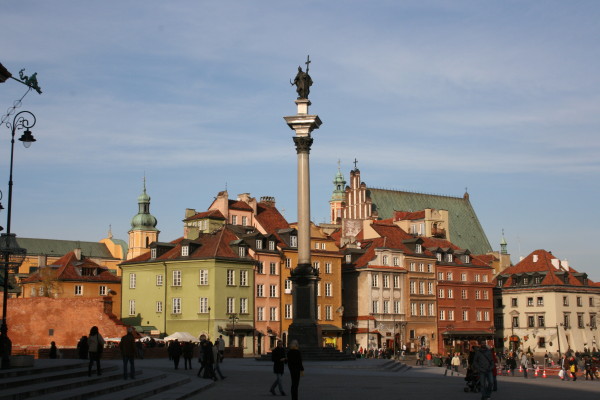Poland
Poland [Polish: Polska; Ukrainian: Польща; Polshcha]. A country extending south to the Sudety and western Carpathian Mountains, which separate the area of Polish settlement from that of the Czechs and Slovaks and the Polish state from the kingdoms of Bohemia and Hungary (as of 1526 the Habsburg monarchy, as of 1918 Czechoslovakia), north to the Baltic sea, west to Prussia (as of 1871 Germany, as of 1949 the German Democratic Republic, as of 1991 Germany), east to Ukraine and Belarus, and northeast to Lithuania and Eastern Prussia (as of 1945 Kaliningrad oblast of the Russian Soviet Federated Socialist Republic, as of 1992 the Russian Federation). The capital is Warsaw. The ethnic and state borders of Poland have remained stable in the south; in the north Poland did not always extend to its natural boundary, the Baltic. Poland's western and eastern borders underwent great changes over the centuries. A Polish state existed from the mid-10th century until 1795; it was restored in 1918, dismantled in 1939, and restored once again in 1945. The Polish state incorporated Ukrainian ethnic territory from the middle of the 14th century, when it annexed the Galician part of the Principality of Galicia-Volhynia. In 1569 it acquired a major part of Ukraine, from Lithuania. In the mid-17th century it lost Left-Bank Ukraine to the Hetman state (which was subsequently subsumed by the Russian Empire), and in the late 18th century it lost Galicia to Austria and the remainder of its Ukrainian holdings to Russia. As restored after the First World War, Poland included much of Western Ukraine (Galicia, Volhynia, Polisia); as restored after the Second World War, it included only part of the westernmost extensions of Ukrainian ethnic territory.
History. Both Poland and Ukraine emerged as political entities at approximately the same time in the 9th and 10th centuries. The relationship between Poland and Kyivan Rus’ was marked by occasional military intervention as each party pursued its own aims or threw its support to a feuding faction in the neighboring state as well as by routine dynastic marriages formed for purposes of achieving diplomatic security. Each faced ongoing warfare with external foes (the Germans and the steppe nomads respectively) that made all-out hostilities between them (aimed at territorial aggrandizement) an unlikely prospect. The two powers lived in a state of approximate equilibrium (although Kyivan Rus’ remained the greater power), and for nearly 300 years the borders dividing them did not change significantly.
The Mongol invasion in the mid-13th century devastated the Ukrainian principalities of Kyivan Rus’, which already faced serious problems due to internecine strife. The Grand Duchy of Lithuania was soon able to incorporate large tracts of Ukrainian territory into its realm and establish a joint Lithuanian-Ruthenian state. Poland was held off by the continued existence of the Principality of Galicia-Volhynia. With the demise of that principality in 1340, the Polish king Casimir III the Great initiated an extended period of territorial expansion eastward, taking most of the principality by 1349. Poland's acquisitions in Ukraine subsequently were realized through more peaceable means. The Union of Krevo (1385), which established a dynastic link between the Lithuanian grand duke Jogaila (Jagiełło) and the Polish queen Jadwiga (Hedwig), allowed Poland to extend its cultural and political influence into the affairs of the Lithuanian state as well as to consolidate its control over Galicia and expand into Podilia. For several centuries the history of Ukraine, particularly that of Galicia, was inextricably bound to that of Poland. The growing influence of Poland resulted finally in the Union of Lublin (1569), which united Poland and Lithuania into a single Polish-Lithuanian Commonwealth (Rzeczpospolita). In practical terms the union was dominated by the Poles, who now took direct control over most of Ukraine.
The Polish influence on Ukraine was profound. Most of the Ukrainian nobles, granted equal rights with their Polish counterparts, were quickly Polonized, and Ukraine was thus bereft of its own social elite. The last vestiges of the Kyivan Rus’ state disappeared as the Ukrainian lands were divided into six voivodeships, or provinces. Large tracts of land were granted to Polish nobles, who established sizable estates (filvarky) that could produce effectively for the booming European grain trade. Some of the largest estates (latifundia) in the Commonwealth were situated in Ukraine. Greater demands were placed on the Ukrainian peasantry, which was being reduced to serfdom. The religious tolerance in the Commonwealth, phenomenal for its times, also had an impact in Ukraine, as the Reformation period saw the influence of Protestant groups, such as the Socinians and Lutherans, spread into Ukraine through Poland. Nevertheless pressure was put on the predominantly Orthodox population of Ukraine to convert to Catholicism, and it resulted indirectly in the establishment of the Ukrainian Catholic church by the Union of Berestia (1596). At the same time Ukraine experienced a tremendous revival. Theological and secular education, literature, and the fine arts all began to flourish, and printing was introduced. The ideas of the Renaissance began to work their way into Ukraine through Poland as the ‘Golden Age’ of 16th-century Polish culture left its mark.
The situation in Ukraine under Polish rule became increasingly more volatile in the first half of the 17th century as socioeconomic, religious, and national tensions grew. The most obvious sources of dissatisfaction lay with the peasantry, which historically had not been tied to manor-style economies; the Orthodox, who were relegated to a second-class status within the Polish-Lithuanian Commonwealth; and the Cossacks, who defended the borderlands of the Polish state against Crimean Tatar and Turkish attack but were granted few of the privileges of a military class. The Cossacks were regarded as troublesome and problematic by the ruling elite of the Commonwealth, and constant attempts were made to control them. Tensions peaked in 1648, when a full-scale uprising led by Bohdan Khmelnytsky erupted in Ukraine and engulfed the Commonwealth in the Cossack-Polish War.
The uprising represented a fundamental turning point. Ukraine might have re-entered the Polish state on the basis of equality within a tripartite Commonwealth (that was an option favored by Bohdan Khmelnytsky and others), but the instability of the times prevented even a serious discussion of the possibility. Unable to assert full independence alone, Khmelnytsky turned to the Muscovite tsar Aleksei Mikhailovich for assistance and concluded the Pereiaslav Treaty of 1654 with the Muscovites. That treaty set in motion the gradual process by which most of Ukraine moved from the Polish sphere of influence into the Muscovite. An attempt was made to abrogate the Pereiaslav agreement with the Treaty of Hadiach (1658), which would have brought Ukraine back into the Commonwealth as an autonomous administrative unit. Ultimately approved by the Commonwealth diet, the agreement was opposed by a large segment of the Cossacks, who did not wish to return to the Polish sphere of influence. At the same time the Muscovites invaded Ukraine, and their invasion signaled the start of a period of protracted fighting and political instability known as the Ruin. Turkey even entered the fray by occupying a large section of the Right-Bank region. A preliminary agreement to resolve the situation was made between Poland and Russia in 1667 with the Treaty of Andrusovo. The division of Ukraine into Right-Bank Ukraine and Left-Bank Ukraine was confirmed (with a provision for Moscow's control of Kyiv) in the Eternal Peace of 1686.
Poland had regained full control of Right-Bank Ukraine by 1714, after an extended period of occupation of the region by Ottoman forces and Cossacks. The largely devastated region once again saw the return of large estates and increased corvée obligations for the peasantry, of which the consequence was a series of haidamaka uprisings. The Polish-Lithuanian Commonwealth, by now rendered largely ineffectual because of the weakness of its elected kings and the chaotic state of its parliament, was forced to rely on Russian assistance in quelling the worst of the uprisings. The Russian intervention in Poland's internal affairs culminated in that country's active role in the partitioning of Poland (1772, 1793, and 1795), whereby Russia acquired all of Poland's Ukrainian possessions other than Galicia and Bukovyna (which were annexed by the Austrian Empire).
Russian Empire, 1795–1917. For some time after Poland's incorporation into the Russian Empire the Ukrainian lands west of the Dnipro River were treated as Polish territory. The socioeconomic order inherited from Poland, with its domination by Polish magnates and gentry, remained intact, and serfdom became even more intensive. The Russian monarchs Paul I (1796–1801) and Alexander I (1801–25) preserved the hegemony of the Polish nobility in the region. Polish culture and education in Volhynia and Right-Bank Ukraine developed more dynamically under tsarist rule than it had under Poland owing to the establishment of the Kremianets Lyceum and the Vilnius (Wilno) School District, which co-ordinated Polish cultural self-government in Russia throughout the formerly Polish territories.
The Polish Insurrection of 1830–1, the leadership of which called for the restitution of Poland in its boundaries of 1772, was primarily based in the Congress Kingdom of Poland, but Polish gentry and clergy from Ukraine also participated. Gen J. Dwernicki's campaign of April 1831 failed to spread the insurrection to Podilia and Volhynia. Punitive policies implemented by the Russian government in Ukrainian territories after the suppression of the insurrection included the liquidation of Polish educational institutions and the removal of many Poles from the local administration. Nevertheless the Polish nobility's economic domination was unaffected, and its cultural hegemony, though weakened, was not eradicated.
With the defeat of the 1831 insurrection Polish political life became centered in the emigration, particularly in Paris. Two broad currents developed: a conservative one headed by Prince Adam Jerzy Czartoryski, who sought the fulfillment of Polish aspirations primarily through the aid of some foreign power, and a democratic one, which urged another insurrection that would aim for social reform as well as Polish independence and thereby attract popular support. Both currents essentially considered the Ukrainian question an internal Polish one, but each in its own way also contributed to the development of the Ukrainian national revival. Czartoryski fostered various schemes aimed at enlisting Ukrainian support, including the creation of a Cossack legion in Turkey during the Crimean War (which fought under the command of Michał Czajkowski). The democrats founded conspiratorial groups in Right-Bank Ukraine that aimed at the restoration of Poland to its boundaries of 1772 and the establishment of an egalitarian social order in which serfdom was abolished. The most significant of the groups were connected with the Association of the Polish People (Stowarzyszenie Ludu Polskiego), led in Ukraine in 1835–8 by S. Konarski. The groups, which sometimes wrote revolutionary literature in the Ukrainian language and appealed to Cossack traditions, spurred the development of a Ukrainian political consciousness.
Russia's defeat in the Crimean War of 1853–6 saw a resurgence of Polish political activity in Ukraine. Polish young people founded secret patriotic societies, particularly in Kyiv. The movement in Poland and Ukraine culminated in the Polish Insurrection of 1863–4, in which Poles from Ukraine played a prominent part. Partisan warfare encompassed Right-Bank Ukraine and Volhynia. The brutal and systematic repressions that followed the defeat of the insurrection (as well as the abolition of serfdom prior to the insurrection in 1861) destroyed Polish hegemony in Ukrainian lands under Russian rule. Although Poles continued to be active in Ukrainian political life (Polish socialists organized workers' circles in Ukraine in the 1870s, for example), the real revival of Polish political life was toward the end of the 19th century and particularly after the Revolution of 1905. Of the various Polish political currents only the Polish Socialist party declared its support for the Ukrainian movement.
The commercial agreements of Russia with Austria and Prussia in 1818 included Right-Bank Ukraine in the Polish customs territory, and the tariff of 1819 separated Right-Bank Ukraine and the Congress Kingdom of Poland from the rest of the Russian Empire. The Right Bank remained an important market for the Polish textile industry, even after the abolition of the Polish-Russian customs border in 1850. With the construction of railroads commercial relations between the Congress Kingdom and Ukraine expanded considerably. In 1895 Ukraine began to export iron ore to Poland; it became the main raw material for Polish metallurgy. Ukraine also exported to Poland rails, agricultural machines, grain, flour, cattle, salt, sugar, tobacco, flax, and wool. From Poland Ukraine imported woolen and cotton textiles, paper, chemical products, soap, and leather. Ukrainian and Polish coal competed intensively for the central Russian market. Poland maintained a favorable balance of trade vis-à-vis the rest of the Russian Empire.
Austrian Empire, 1772–1918. After its third partition in 1795, Poland ceased to exist as a political polity. The mainstay of Polish national consciousness remained until the 20th century with its nobility, the szlachta, and the geographical center of hope for a national revival became those Polish territories within the Austrian Empire, specifically the Crown land of Galicia, which Austria acquired from Poland in 1772. Galicia, however, consisted of two historically and ethnically distinct regions: the west, which was largely Polish, formed from the former Cracow and Sandomierz voivodeships, and the east, which was largely Ukrainian, formed from the former Rus’ voivodeship (originally Halych principality), with parts of the Belz, Volhynia, and Podilia voivodeships. Galicia also became a focal point of Ukrainian national aspirations during the 19th century.
Until the mid-19th century no specifically contentious issues emerged between the Ukrainians and the Poles in Galicia. Only with the respective national revivals of the two nations did antagonism begin to grow. In 1848, Ukrainians started organizing themselves politically (with the Supreme Ruthenian Council), achieving recognition as a separate people, and demanding a division of Galicia into two crown lands along ethnic lines. The Poles maintained, however, that, historically, Galicia in its entirety belonged to Poland. They established the pro-Polish Ruthenian Congress, which published the newspaper Dnewnyk Ruskij and worked to counter Ukrainian claims.
The subsequent political realignment of the Austrian Empire exacerbated Polish-Ukrainian tensions. The appointment of Agenor Gołuchowski as governor of Galicia in 1849 (his tenure lasted until 1875, with only minor interruptions) heralded a political understanding between the central government and the Poles that the Poles would, by and large, have control of the Galician provincial administration. Such control was solidified after the reorganization of the empire into a dual monarchy in 1867. The perception among Poles that Galicia was the most likely base for a Polish national revival grew after the failure of the Polish Insurrection of 1863–4. For Ukrainians, after the Ems Ukase banned Ukrainian publications in the Russian Empire, the center of Ukrainian national life moved to Galicia—now called the ‘Piedmont’ of Ukraine. Until the outbreak of the First World War both Ukrainians and Poles maintained aspirations for statehood and took many steps toward that goal within their respective territories under Austro-Hungarian rule. In some cases the efforts of the one were mirrored by those of the other (for example, in the creation of sporting or paramilitary groups as the precursors of a national army).
20th century. With the end of hostilities in 1918 and the collapse of the Habsburg Empire Poland moved to re-establish its historical state, as much as possible in accordance with its pre-1772 borders. The effort brought Poland into conflict with Ukrainians, who had proclaimed the Western Ukrainian National Republic (centered around the territory of Galicia). The rival territorial ambitions finally erupted in the Ukrainian-Polish War in Galicia (1918–19), which commenced with the November Uprising in Lviv, 1918. Poland benefited in its efforts because of Entente fears of a Bolshevik offensive westward: on 28 June 1919 the Supreme Council of the Paris Peace Conference allowed Poland to occupy all of eastern Galicia (subject to a review of its international status).
After the Ukrainian Galician Army was pushed out of Galicia in the summer of 1919, the newly restored Polish state occupied the region. On 18 March 1921 Poland, Soviet Russia, and Soviet Ukraine signed the Peace Treaty of Riga, which ended the Soviet-Polish War and established the Soviet-Polish border. The agreement ceded Galicia as well as Polisia and western Volhynia (formerly within the Russian Empire) to Poland. On 15 March 1923 the Conference of Ambassadors also recognized that border. Ukrainians protested with a mass demonstration in front of Saint George's Cathedral in Lviv on 24 March 1923. Galicia, Polisia, and Volhynia remained within the boundaries of the Polish state until September 1939, when Poland was divided between Germany and the Union of Soviet Socialist Republics.
In order to win recognition of Poland's eastern boundaries by the Council of Ambassadors, the Polish Sejm had passed a law on 26 September 1922 which provided for autonomous government for Galicia, prohibited Polish colonization there, and projected the establishment of a Ukrainian university; those remained paper declarations. On 28 June 1919 Poland had agreed at Versailles (see Treaty of Versailles) to respect the national and religious rights of its national minorities, but it unilaterally repudiated that agreement, which it had never honored, on 13 September 1934.
When the former socialist Marshal Józef Piłsudski took power in a coup in May 1926 and established the Sanacja regime, the national minorities looked forward to an improvement in their situation. In fact Piłsudski and his successors continued the previous governments' policies of denationalization and Polonization.
The rights of the Ukrainian language in the administration, the judiciary system, and the school system were severely restricted, and in Kholm region and Podlachia even the minimal legal norms existing in Galicia, Volhynia, and Polisia were bypassed. Most Ukrainian-language schools that had existed from Austrian times were changed into bilingual Polish-Ukrainian schools, and in the Kholm region and Podlachia only Polish-language schools existed. Not only did the Polish government prevent the establishment of a Ukrainian university, but it closed down all the Ukrainian-language chairs that had existed at Lviv University under Austrian rule.
The Orthodox church in Poland was completely dependent on a government which tried to Polonize it and convert Orthodox Christians to Roman Catholicism. Orthodox churches in the Kholm region and Podlachia were destroyed en masse in 1938, and in Volhynia (notably the village of Hrynky) there were instances of forcible conversion from Orthodoxy to Roman Catholicism. Another Polish initiative was the neounion campaign, which sought to spread Eastern rite Christianity (under Latin rite jurisdiction) among Ukrainians outside Galicia.
In spite of agrarian overpopulation the Polish government and voluntary associations implemented a program of colonization in Western Ukraine by Poles. In 1920–3, state lands in Volhynia and Polisia were distributed to Polish veterans, most of whom were not even peasants. During implementation of the land reform some great estates were subdivided in Western Ukraine (so called ‘parcelation’), but most of the 800,000 ha thus obtained were sold to Poles.
The Polish state pursued a policy of ‘divide and rule’ in Ukrainian territories, and established the Sokal border as part of that effort. In the Kholm region and Podlachia it denied local Ukrainians any cultural rights whatsoever. In Polisia it tried to cultivate a purely local, non-Ukrainian consciousness by encouraging the population to define itself only as tuteishi, or ‘people who live here.’ In Volhynia it sought out local Ukrainian leaders willing to collaborate with the Polish authorities (they helped to establish the Volhynian Ukrainian Alliance), and in particular it sought to isolate Ukrainian institutions there from contacts with their Galician counterparts. In Galicia, where Ukrainian national consciousness was most intense, the authorities tried overtly to curb Ukrainian political, social, cultural, and economic activities; they also made efforts to divide Ukrainians there by supporting the otherwise moribund Russophiles, by encouraging the formation of separate national identities for Lemkos and Hutsuls, and by seeking to draw Roman Catholic Ukrainians (latynnyky) and Ukrainian petty gentry into the Polish nation.
The failure of the interwar Polish state to accommodate Ukrainian interests in even the slightest way helped to provoke a militant backlash. In the 1920s the Ukrainian Military Organization carried out a number of sabotage actions against the regime, and in the 1930s its work was continued on an even broader scale by the Organization of Ukrainian Nationalists. The Polish government attempted to cow its Ukrainian population by carrying out the Pacification in 1930. That action prompted the Ukrainian political mainstream to attempt a rapprochement with the government—the so-called Normalization. But it proved to be a fiasco. Ukrainians by and large remained extremely dissatisfied with the Polish regime.
After Poland was once again divided, in September 1939, that time by Germany and the USSR, most of the Ukrainian territories of the interwar Polish state fell under Soviet control in 1939–41, with a small westerly strip remaining in the Generalgouvernement. In 1941 the remainder fell to the Germans. Throughout the war Poland maintained the recovery of eastern Galicia as one of its territorial imperatives. That goal proved a stumbling block for effective co-operation between Ukrainian resistance forces and the underground Polish Home Army.
With the reoccupation of Western Ukrainian lands in 1944 and the establishment of a Soviet satellite regime in Poland after the Second World War, Poland's relationship to Ukraine changed fundamentally. The borders between the two states were re-established, and a subsequent resettlement of populations between the two states, in which Ukrainians in Poland were moved to the Ukrainian Soviet Socialist Republic and Poles in the Ukrainian SSR moved to Poland, was completed in 1947 with Operation Wisła, which cleared the Polish-Ukrainian borderland area of most Ukrainians.
The extensive Ukrainianization of Galicia in the postwar era and the specter of a common foe, the Russian-dominated Union of Soviet Socialist Republics, resulted in improved relations between Ukraine and Poland after 1945. Official relations were conducted largely under the rubric of Eastern Bloc institutions and state-sanctioned cultural exchanges. On a more informal level political dissenters found a common cause, and Poland, with a somewhat more relaxed political atmosphere, served as a conduit for (among other things) political ideas and literature to Ukraine. Poland was the first state to recognize the 1991 Ukraine’s Declaration of Independence after the referendum of 1 December 1991.
Ukrainians in Poland. Although many Ukrainians lived within Polish national territory before the 20th century, relatively few of them were located within ethnic Polish lands. A substantial number of Ukrainians lived in the borderland Lemko region, Sian region, Kholm region and Podlachia, but only approximately 20,000 lived in Poland proper. Many of that group left Poland during the First World War. They were replaced in the interwar period with a very different type of Ukrainian community. After the Second World War the nature of the Ukrainian presence in Poland again changed drastically.
Pre–1914. Within the Polish territories of the Austro-Hungarian Empire Cracow was the only city with a large concentration of Ukrainians. A Ukrainian Catholic parish had been established there in the late 18th century, and by 1910 there were approximately 1,500 Ukrainians living in the city. Within Polish territories under the Russian Empire Warsaw was the main center. Even within the Polish-Lithuanian Commonwealth the city attracted a substantial number of Ukrainian gentry, merchants, and Cossacks. In 1721 a Ukrainian Basilian monastery was established there. By the early 20th century there were some 5,000 to 10,000 Ukrainians living there. Many were civil servants, members of the Russian imperial bureaucracy, or students at Warsaw University and other post-secondary institutions. Smaller numbers of Ukrainians lived in Lublin and Siedlce, the administrative centers of the Kholm region and Podlachia. On the eve of the First World War there were up to 50,000 Ukrainians living in Poland proper (not including the Kholm region). The majority of those left in 1915 during the general Russian evacuation before the advancing German and Austro-Hungarian armies.
Interwar era. A new Ukrainian community emerged in Poland in the interwar period. With the final defeat of the Army of the Ukrainian National Republic in its struggle for independence (1917–20) approximately 30,000 Ukrainians, mostly military personnel, remained or were interned in Poland. Camps were situated in Kalisz, Łańcut, Szczepiórno, Piotrków, Strzałków, Tarnów, Wadowice, and other locations until 1923. Thereafter most of the internees left for France or Czechoslovakia, but a group remained and settled throughout the country. Poland became a major center of Ukrainian émigré political activity until 1939, and Warsaw emerged as an important cultural center. Poland served as the home base of the Government-in-exile of the Ukrainian National Republic until 1923, and Ukrainians pressed their case for independence through bodies such as the Warsaw-centered Promethean movement. Important scholarly work was undertaken by the Ukrainian Scientific Institute in Warsaw and other bodies. By the late 1930s there were about 20,000 Ukrainians living in central Poland, of whom most were in Warsaw (ca 3,000), Cracow (ca 2,000), and smaller centers, such as Katowice, Kielce, Łódź, Lublin, Poznań, Radom, and Rzeszów. That number included political émigrés, students, and several thousand professionals and laborers who had migrated from Western Ukraine to central Poland in search of employment.
During the early part of the Second World War (1939–41) the number of Ukrainians in Poland increased dramatically as a result of the influx of refugees from the Bolshevik-occupied territories to the German-controlled Generalgouvernement. Cracow became the new hub of Ukrainian life, with a community numbering approximately 3,000 (compared to Warsaw's 5,000 and Lublin's 1,000). Ukrainian community life became more vibrant as a result of the work of the Ukrainian Central Committee in Poland. After the Germans occupied Western Ukraine, a substantial number of the refugees returned there.
Post–Second World War. Ukrainian life in Poland changed completely in the postwar period. Most Ukrainians who lived in central Poland left for the West before it was occupied by the Soviet Army in 1944–5, and most of those remaining were resettled in ethnic Ukrainian territory as a result of the final alignment of borders between the Polish People's Republic (PPR) and the Ukrainian Soviet Socialist Republic (see Curzon Line and Zakerzonnia). Approximately 500,000 Ukrainians living in the PPR were resettled in the Ukrainian SSR. Nevertheless a substantial Ukrainian minority remained within the newly drawn Polish border in northwestern Galicia, the Sian region, Podlachia, and particularly the Lemko region, which was controlled by the Ukrainian Insurgent Army in 1946–7. In April–July 1947 the Polish government mounted Operation Wisła, a wholesale forced deportation of Ukrainians from their ethnographic territory. They were resettled in the so-called regained lands (Ziemie Odzyskane), the former territories of eastern and northern Germany and East Prussia acquired by Poland after the Second World War. A very small number of Ukrainians managed to stay in Ukrainian ethnographic territory, mostly in Podlachia.
The hostility afforded Ukrainians as individuals was also evident in official and general societal attitudes toward them (there was a general refusal to recognize Ukrainians in Poland as a distinct national minority) and made it extremely difficult for Ukrainians to organize and present their demands. Only in 1956, after a liberalization of the communist regime, were Ukrainians granted certain rights and allowed to form their own organization, the Ukrainian Social and Cultural Society (USKT; since 1990 the Association of Ukrainians in Poland [OUP]).
In spite of numerous petitions by the resettled Ukrainians the Polish government continued to enforce a ban on their return to their former homelands. In 1957–8 up to 11,000 requested permission to resettle. Approximately 2,000 to 3,000 managed to do so (mainly back to the Lemko region), but at their own risk. Ironically, large sections of the Lemko region continued to be sparsely settled (in the 1960s there were 27 inhabitants/sq km, whereas in 1939 there had been 70), and the Boiko region remained virtually depopulated.
The exact number and distribution of the Ukrainian population in postwar Poland can only be estimated, as census figures did not record information regarding ethnic background or language use. Official estimates put the total number of Ukrainians at 180,000; unofficial figures commonly range as high as 300,000. The largest single concentration of Ukrainians is found in the Olsztyn voivodeship, in northern Poland, where they number 50,000 to 60,000 and constitute approximately 6 percent of the region's population. Other major areas of Ukrainian settlement in Poland included the voivodeships of Koszalin in the northwest (30,000), Wrocław in the west (approximately 20,000), Szczecin in the west (over 10,000), and Zielona Góra in the west (approximately 10,000). Another 2,000 lived in the south-central voivodeship of Opole.
The Lemko region, the Sian region, and northwestern Galicia are now part of Subcarpathian voivodeship. The Lemko region was inhabited by about 10,000 Ukrainians in the 1960s, and in some districts (such as Komańcza, Mokre, and Morochów) they even constitute a majority. In the Sian region a substantial number of Ukrainians live in the Peremyshl (in the city and in Ukrainian villages, such as Poźdiacz and Kalników) and Jarosław districts. There were approximately 20,000 Ukrainians in what are now Lublin and Podlaskie voivodeships, mainly in the Biała Podlaska and Volodava regions of Podlachia, particularly in the area of Siemiatycze, Bielsk Podlaski, and Hainivka (Hajnówka). They are officially considered Belarusians, however. Relatively few Ukrainians live in central Poland, and those who do live in cities.
Nearly 90 percent of Ukrainians lived in rural areas in the 1960s. Since then there has been a degree of urbanization. The largest urban concentrations of Ukrainians are in Cracow, Legnica, Lublin, Peremyshl, Szczecin, Warsaw, and Wrocław.
Conditions for community life. In 1956, Ukrainians were permitted to form the Ukrainian Social and Cultural Society (USKT), the single Ukrainian institution allowed to educate and encourage cultural activity among Ukrainians. It also served as a representative body and assisted the authorities in deciding questions regarding the Ukrainian minority in Poland. Its headquarters were in Warsaw. It was under the direct control of the Polish Communist party (formally named the Polish United Workers' party) and the government and was a semiofficial organization. In 1958 it was given authority over 8 voivodeship and 34 district administrations, which oversaw 270 communities, of which some were in cities and some in the countryside. Its membership was 7,000. In 1970 the USKT had 5 voivodeship executives, 14 district administrations, 205 groups, and 4,750 members.
The Ukrainian community, however, faced considerable hostility from virtually all segments of Polish society, particularly Poles resettled from the Ukrainian SSR. Local officials were commonly the ones who immediately made community work difficult among Ukrainians, although the upper reaches of the Polish government also fomented hatred and distrust of Ukrainians by issuing publications and films about the ‘bestial acts’ of the Ukrainian Insurgent Army and the ‘Banderites’ (using that term in a specifically pejorative manner), the ‘collaboration’ of Ukrainians with the Nazis, and the alleged participation of Ukrainians in the suppression of the Warsaw Uprising of 1944.
Many Ukrainians, particularly those in cities, concealed their national identity. The loss of a traditional territorial base, their wide dispersal, and the small size of the intelligentsia resulted in widespread denationalization among Ukrainians, particularly the younger generation. The situation was exacerbated by the policy of Russification within the Union of Soviet Socialist Republics and the total indifference of the government of the Ukrainian SSR to the fate of Ukrainians in Poland; Ukrainian diplomatic representation in Poland, visits by official or semiofficial delegations, and the sponsorship of summer camps for Ukrainian children in Poland or of instructional sessions for teachers were all either minimal or nonexistent.
Church life. Ukrainians in Poland adhere to the Ukrainian Catholic and Orthodox faiths in roughly equal numbers. Both traditional churches have been beset with a wide range of problems in the post–Second World War period. In the immediate postwar period the Ukrainian Catholic church was not formally liquidated as it was in the Ukrainian SSR at the Lviv Sobor of 1946. Its institutional structure, however, was effectively dismantled with the deportation of its spiritual head, Bishop Yosafat Kotsylovsky of Peremyshl, and other priests to the USSR. After Operation Wisła the church hierarchy was physically eliminated. Many priests were incarcerated in the Jaworzno prison. Those priests remaining free were forbidden to practice in their rite. Pope Pius XII responded to those developments by rejecting the dissolution of the Ukrainian Catholic church in Poland. He appointed A. Hlond (primate of Poland) and then (after Hlond's death) S. Wyszyński (archbishop and later primate) as ordinary of the Eastern rite Catholics in Poland.
Wyszyński, himself imprisoned by the Polish authorities in 1953–6, was incapable of assisting the Ukrainian church: he recommended that Eastern rite priests save themselves by converting to the Latin rite. It was in that spirit that the Basilian monastery in Warsaw converted to the Latin rite. Meanwhile the Polish (Roman Catholic) church proceeded with numerous claims on the properties of the paralyzed Ukrainian Catholic church. After the liberalization of 1956, Ukrainian Catholics were finally allowed liturgies in their own rite but not separate parishes: they could maintain only priests who would be subservient to a Roman Catholic hierarchy. In some instances (one notable example being in Katowice under Bishop H. Bednorz) the arrangement worked well, and the local hierarch actively promoted the development of the Ukrainian church; in many, however, problems arose through both misunderstandings and deep-rooted prejudices. Some church communities converted to Orthodoxy. By 1977 the Ukrainian Catholic church, however, had developed a network of 77 centers. Several religious orders have been formed since the 1950s, and in 1969 an Eastern rite theological seminary was established in Lublin. In 1989 Ivan Martyniak was consecrated the first Ukrainian Catholic bishop in Poland, and in 1991 he assumed the re-established the Peremyshl eparchy. Estimates of the number of Greek Catholics in Poland range as high as 400,000, although many Ukrainians have identified themselves as Roman Catholics in order to avoid harassment.
The Polish Autocephalous Orthodox church (PAOC) emerged in the 1920s as a body serving the needs of the approximately four million Ukrainian, Belarusian, and (to a lesser extent) Russian and Polish adherents of Orthodoxy. The majority of them were located in the areas of interwar Poland that had been in the Russian Empire (notably the Kholm region). In the interwar era the PAOC maintained a strong Ukrainophile current, and during the Second World War PAOC bishops played an important role in the establishment of the Ukrainian Autocephalous Orthodox church. Nevertheless a strong Russophile current existed within the church hierarchy. The Poles maintained their efforts to convert the Orthodox population to Catholicism, in some cases by force and in general through the launching of the neounion campaign.
After the Second World War the Polish Autocephalous Orthodox church, under pressure from the Soviet authorities, lost its independence. In 1945 Metropolitan Dionisii Valedinsky was removed from his post; it was filled in 1951 by a Russian Orthodox hierarch. More significant, the 1924 Tomos issued by the Patriarch of Constantinople, which provided the PAOC with its autocephaly, was revoked in 1948 by the Patriarch of Moscow, who now brought the church under his jurisdiction. Since then the Russian language has occupied a more prominent position in ecclesiastical affairs, and much of the Ukrainian character of the church has been muted. At present the PAOC has approx 500,000 faithful (primarily Ukrainians and Belarusians) and is centered in Podlaskie voivodeship, with smaller concentrations in the other voivodeships.
Schools, education, press, publishing houses. After the liberalization of 1956 the Polish educational administration, in association with the Ukrainian Social and Cultural Society, began introducing Ukrainian language courses in elementary schools. Since then primary education in Ukrainian has been available in schools numbering from two to nine (reaching a maximum of 583 pupils in 1960–1). Ukrainian was also introduced as a subject and taught in as many as 152 schools (1958–9) and to as many as 2,711 pupils (1963–4). Ukrainian-language education was also introduced into two secondary schools (Legnica and Górowo Iławeckie). A department of Ukrainian philology was established at Warsaw University in 1953, and for a period university-level Ukrainian courses were offered in Szczecin (1957–65) and Olsztyn (1965–7). Ukrainian has also been taught at the pedagogical institute in Bartoszyce. The proportion of Ukrainian students receiving instruction in their native language has been very low, and the number of fully qualified Ukrainian teachers assigned to Ukrainian classes has also been small (commonly the authorities refused to appoint them to schools where Ukrainian courses are offered).
Extracurricular education is weakly developed. The Ukrainian Social and Cultural Society organized about 18 clubs and 60 independent choir, drama, and dance groups, with a membership of about 600. In 1967, the USKT began organizing annual festivals of Ukrainian music and song (first held in Sianik [Sanok]). In 1959 a section of the USKT devoted to the preservation and development of Lemko culture was formed.
The only Ukrainian newspaper in Poland is the weekly Nashe slovo (est 1956), which is published by the central administration of the Association of Ukrainians in Poland along with its supplements Lemkivs’ke slovo and Svitanok (for children) and the monthly journal Nasha kul’tura (from 1958). Nasha kul’tura provides some information about cultural life in what was Soviet Ukraine and in the diaspora. Since 1957 the Ukrainian Social and Cultural Society has also published the almanac Ukraïns’kyi kalendar, in a pressrun of 9,000. In the 1980s the students of Ukrainian philology at Warsaw University began to publish an irregular journal named Zustrichi, which over time has expanded its format and begun to address broad issues of community concern. The respective Ukrainian religious dominations now publish Orthodox (since 1986) and Catholic (since 1987) church almanacs in Ukrainian.
In Olsztyn and Rzeszów weekly Ukrainian radio programs transmitted regionally; in the 1960s and 1970s programs existed in Koszalin and Lublin. There are few titles published in Ukrainian other than the almanacs and texts for elementary schools issued by the Association of Ukrainians in Poland. The demand for Ukrainian publications was only partially satisfied by Soviet Ukrainian production.
Literature, art, and scholarship. The Ukrainian poets in Poland include Ya. Dudra, Ya. Hudemchuk, Ostap Lapsky, I. Reit, Yevhen Samokhvalenko, O. Zhabsky, and I. Zlatokudr. The prose writers include H. Boichuk, P. Halytsky, Stepan Kozak, K. Kuzyk, I. Sheliuk, and Antin Serednytsky (Verba). An anthology of works by those authors was published by the Ukrainian Social and Cultural Society in 1964 as Homin (Echo). The Ukrainian artists in Poland include Jerzy Nowosielski and V. Savuliak (who were professors at the art academy in Cracow), Nykyfor, Lev Gets, A. Mentukh, V. Pankiv, Hryhorii Petsukh, Zinovii Podushko, Myroslav Smerek, Viacheslav Vaskivsky, and Tyrs Venhrynovych. Other noted cultural figures include S. Cherhoniak, Ya. Konstantynovych, and V. Hodys, who are art scholars; T. Demchuk, a theater critic; Yaroslav Poliansky, a composer of music and organizer of choirs; and D. Denysenko, A. Matsihanovska, Marusia Shchutska, and O. Tabachnyk, performing artists who appeared on the Polish stage.
Centers of Ukrainian scholarship in Poland are the Ukrainian departments (language and literature) at the Institute of Slavic Studies of the Polish Academy of Sciences, the department of Ukrainian philology at Warsaw University, and departments of Slavic studies at other universities. Among Ukrainian scholars in Poland are the historians Yevhen Misylo and Ya. Yurkevych; the linguists and literary scholars Mykhailo Lesiv, Antin Serednytsky, Stepan Kozak, Volodymyr Mokry, and Wiesław Witkowski; the psychologists Stepan Balei and V. Shevchuk; and the musicologist Józef Chomiński.
BIBLIOGRAPHY
Dragomanov, M. Istoricheskaia Pol'sha i velikorusskaia demokratiia (Geneva 1881)
Jabłonowski, A. Pisma. Vol 1, Ziemie Ruskie Rzeczypospolitej (Warsaw 1910); vol 2, Kresy Ukrainne (1910); vol 3, Ukraina (1911); vol 4, Wołyń, Podole i Ruś Czerwona (1911)
Halecki, O. Dzieje Unii Jagiellońskiej, 2 vols (Cracow 1919–20)
Wojnarowskyj, T. Das Schicksal des ukrainischen Volkes unter polnischer Herrschaft (Vienna 1921)
Wasilewski, L. Ukraińska sprawa narodowa w jej rozwoju historycznym (Warsaw 1925)
Sprawy Narodowościowe (Warsaw 1927–39)
Kutschabsky, W. Die Westukraine im Kampfe mit Polen und dem Bolschewismus in den Jahren 1918–1923 (Berlin 1934)
Bocheński, A.; Łoś, S.; Bączkowski, W. Problem polsko-ukraiński w Ziemi Czerwieńskiej (Warsaw 1938)
Zółtowski, A. Border of Europe: A Study of the Polish Eastern Provinces (London 1950)
Rhode, G. Die Ostgrenze Polens: Politische Entwicklung, kulturelle Bedeutung und geistige Auswirkung, vol 1, Im Mittelalter bis zum Jahre 1401 (Cologne–Graz 1955)
Lewyćkyj, B. Warszawa-Kijów: Informacja o stosunkach politycznych, gospodarczych i kulturalnych w latach 1945–1957: Dokumenty, no. 4 (Paris 1958)
Verves, H. Holovni problemy ukraïns'ko-pol's'kykh literaturnykh vzaiemyn XIX st. (Kyiv 1958)
Horak, S. Poland and Her National Minorities, 1919–1939: A Case Study (New York–Washington–Hollywood 1961)
Kubijovyč, V. Western Ukraine within Poland, 1920–1939 (Ethnic Relationships) (Chicago 1963)
Perdenia, J. Stanowisko Rzeczypospolitej szlacheckiej wobec sprawy Ukrainy na przełomie XVII–XVIII w. (Wrocław–Warsaw–Cracow 1963)
Ripetskyj, S. Ukrainian-Polish Diplomatic Struggle, 1918–1923 (Chicago 1963)
Włodarski, B. Polska i Ruś 1194–1340 (Warsaw 1966)
Hornowa, E. Ukraiński obóz postępowy i jego współpraca z polską lewicą społeczną w Galicji 1876–1895 (Wrocław–Warsaw–Cracow 1968)
Demkovych-Dobrians'kyi, M. Ukraïns’ko-pol's'ki stosunky u XIX st. (Munich 1969)
Deruga, A. Polityka wschodnia Polski wobec ziem Litwy, Białorusi i Ukrainy (1918–1919) (Warsaw 1969)
Podraza, A. (ed.) Kraków-Kijów. Szkice z dziejów stosunków polsko-ukraińskich (Cracow 1969)
Szcześniak, A.B.; Szota, W.Z. Droga do nikąd: Działalność Organizacji Ukraińskich Nacjonalistów i jej likwidacja w Polsce (Warsaw 1973)
Kozak, S.; Jakóbiec, M. (eds). Z dziejów stosunków literackich polsko-ukraińskich (Wrocław–Warsaw–Cracow–Gdańsk 1974)
Kwilecki, A. Łemkowie: Zagadnienie migracji i asymilacji (Warsaw 1974)
Chojnowski, A. Koncepcje polityki narodowościowej rządów polskich w latach 1921–1939 (Wrocław 1979)
Papierzyńska-Turek, M. Sprawa ukraińska w Drugiej Rzeczypospolitej 1922–1926 (Cracow 1979)
Potichnyj, P. (ed). Poland and Ukraine: Past and Present (Edmonton 1980)
Piotrkiewicz, T. Kwestia ukraińska w Polsce w koncepcjach piłsudczyzny 1926–1930 (Warsaw 1981)
Hunczak, T. (ed). Ukraine and Poland in Documents, 1918–1922, 2 vols (New York–Paris–Sydney–Toronto 1983)
Beauvois, D. Le noble, le serf, et le révizor: La noblesse polonaise entre le tsarisme et les masses ukrainiennes (1831–1863) (Paris 1985)
Sysyn, Frank E. Between Poland and the Ukraine: The Dilemma of Adam Kysil, 1600–1653 (Cambridge Mass 1985)
Torzecki, R. Kwestia ukraińska w Polsce w latach 1923–1929 (Cracow 1989)
Trukhan, M. Ukraïntsi v Pol'shchi pislia druhoï svitovoï viiny, 1944–84 (New York–Paris–Sydney–Toronto 1990)
Mańkowski, Z. (ed). Pogranicze: Studia z dziejów stosunków polsko-ukraińskich w wielu (Lublin 1992)
Siwicki, M. Dzieje konfliktów polsko-ukraińskich, 3 vols (Warsaw 1992–4)
Budzyński, Z. Ludność pogranicza polsko-ruskiego w drugiej połowie XVIII wieku (Przemyśl–Rzeszów 1993)
Isaievych, Ia. et al (eds). Ukraïna–Pol'shcha: Istorychna spadshchyna i suspil'na svidomist' (Kyiv 1993)
Łach, K. (ed). Polska i Ukraina w nowej Europie (Warsaw 1993)
Stegner, T. (ed). Polacy o Ukraińcach, Ukraińncy o Polakach (Gdańsk 1993)
Gill, W.; Gill, N. Stosunki Polski z Ukrainą w latach 1989–1993 (Toruń–Poznań 1994)
Babiński, G. Pogranicze polsko-ukraińskie: Etniczność–zróżnicowanie religijne–tożsamość (Cracow 1997)
Półćwiartek, J. Sąsiedztwo: Osadnictwo na pograniczu etnicznym polsko-ukraińskim w czasach nowożytnych (Rzeszów 1997)
Halagida, Igor. Ukraińcy na zachodnich i północnych ziemiach polskich 1947–1957 (Warsaw 2002)
Syrnyk, Jarosław. Ukraińskie Towarzystwo Społeczno-Kulturalne (1956–1990) (Wrocław 2008)
Kuchabsky, V. Western Ukraine in Conflict with Poland and Bolshevism, 1918–1923 (Edmonton–Toronto 2009)
Wysocki, Jacek. Ukraińcy na Lubelszczyźnie w latach 1944–1989 (Lublin 2011)
Stępień, Stanisław (ed). 30 lat stosunków między Polską a nepodległą Ukrainą: Doświadczenia a perspektywy (Warsaw 2021)
B. Kravtsiv, V. Kubijovyč, O. Ohloblyn, I. Lysiak Rudnytsky, M. Zhdan
[This article originally appeared in the Encyclopedia of Ukraine, vol. 4 (1993).]

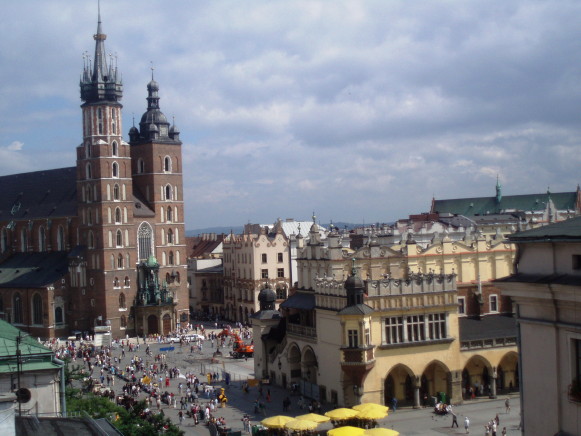
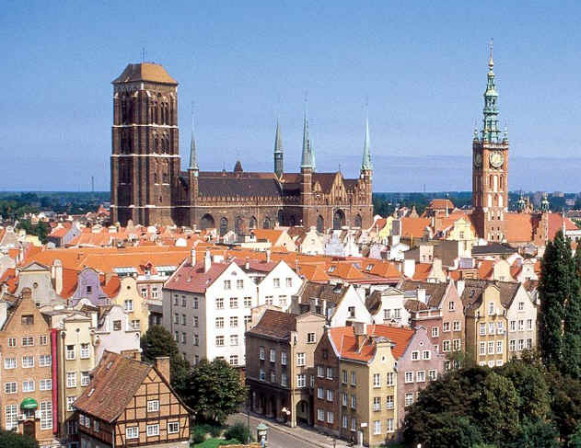
%20(panorama).jpg)
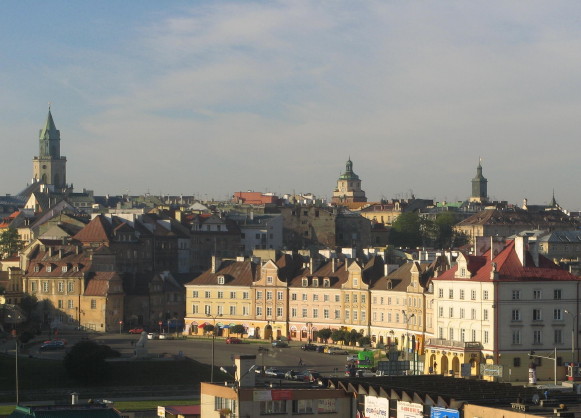
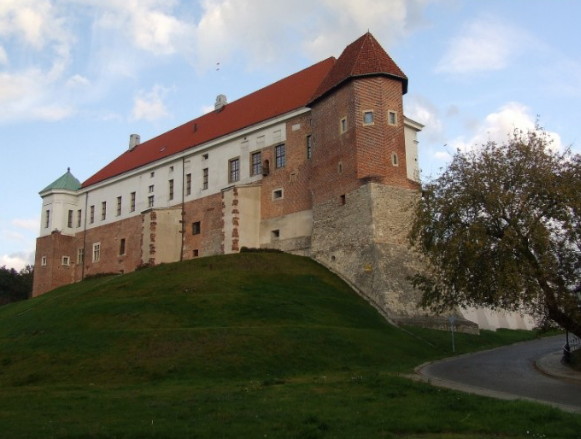
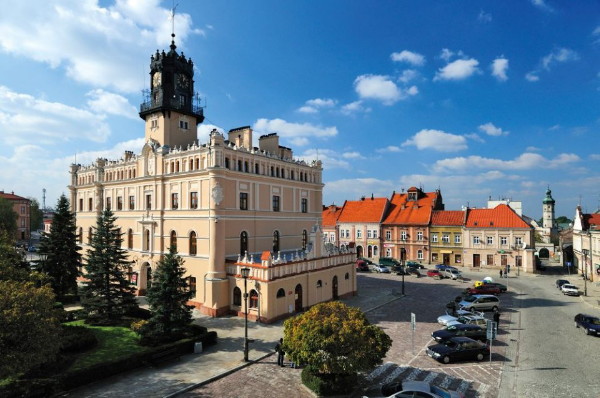
%20Holy%20Trinity%20Ukrainian%20Catholic%20Church.jpg)
